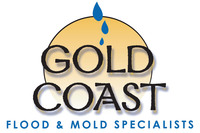Mold Allergies and Other Health Risks Associated with Mold
Mold, a type of fungus, is ubiquitous in nature, often cohabiting spaces with humans and other organisms. While many types of mold are benign, some can cause health problems, particularly in individuals with sensitivities or weakened immune systems. Among the most common health-related issues linked to mold exposure is “mold allergy.” This article delves into the specifics of mold allergies, highlighting their symptoms and also shedding light on other health risks tied to mold.

What is Mold?
Mold consists of tiny, multicellular fungal organisms that decompose organic materials, playing an essential role in the ecosystem by breaking down dead plants and trees. These fungi reproduce by releasing spores that are transported through the air. When these spores find a damp and warm environment, they germinate and grow into new mold colonies.
Mold Allergy: An Overview
People who have mold and mildew allergies are essentially reacting to these airborne spores. When inhaled, these spores can trigger allergic reactions in some people. Just like pollen or pet dander, mold spores are common allergens that can exacerbate asthma or lead to allergic rhinitis or sinusitis.
Symptoms of Mold Allergies
The symptoms of mold allergies are similar to those of other allergies. Common symptoms include:
- Sneezing
- Runny or stuffy nose
- Itchy or watery eyes
- Itchy throat or inside the ears
- Coughing
- Wheezing or shortness of breath
- Skin rashes
These symptoms can range from mild to severe, depending on the individual’s sensitivity and the level of mold exposure. It’s essential to consult a physician if one suspects they have mold allergies, especially since many of these symptoms overlap with other respiratory conditions.
Health Risks Beyond Allergies
While mold allergies are a prevalent concern, molds, especially certain types like Stachybotrys chartarum (often referred to as “black mold”), can pose other health risks:
- Asthma Exacerbation: For asthma sufferers, exposure to mold can be particularly harmful. Mold spores can induce asthma attacks in people who are allergic to mold, leading to coughing, wheezing, and difficulty in breathing.
- Infections: While rare, mold can cause infections, especially in individuals with compromised immune systems, chronic lung diseases, or those taking medications that suppress the immune response. Aspergillosis is a notable example of a mold-related infection affecting the lungs.
- Toxic Mold Syndrome: Certain molds produce mycotoxins, toxic compounds that can be harmful when ingested, touched, or inhaled. There’s an ongoing debate among scientists and health professionals about the extent and types of health problems that can be caused by exposure to these mycotoxins. Symptoms range from fatigue and headaches to serious respiratory complications.
- Mold-Induced Hypersensitivity: Some people can develop hypersensitivity pneumonitis after prolonged mold exposure. This condition is an inflammation of the lungs and can present with symptoms like shortness of breath, fatigue, and fever.
Addressing Mold in Living Spaces
Given the health risks, it’s vital to address mold growth promptly. Moisture control is the key. Here are some measures to prevent and treat mold infestations:
- Address Water Leaks: Mold thrives in moist environments. Fixing leaks in roofs, windows, and pipes can prevent mold growth.
- Ensure Proper Ventilation: Bathrooms, kitchens, and laundry rooms are prone to mold due to the presence of moisture. Using exhaust fans can help reduce moisture in these areas.
- Reduce Indoor Humidity: Maintaining indoor humidity levels between 30-50% can prevent mold growth. Dehumidifiers and air conditioners can help achieve this.
- Regular Cleaning: Regular cleaning, especially in damp areas, can keep mold at bay. If mold is spotted, scrubbing the area with water and detergent can often remove it.
However, if mold infestation is extensive, or if you suspect the presence of toxic mold, it’s wise to consult a mold remediation company. They have the expertise and equipment to handle significant mold problems, ensuring the safety and well-being of inhabitants.
Mold Allergy and Asthma
If you have allergies and asthma, your asthma symptoms may be triggered by exposure to mold spores. In some people, exposure to certain molds can cause a severe asthma attack. Signs and symptoms of asthma include:
- Coughing
- Wheezing
- Shortness of breath
- Chest tightness
If you have a stuffy nose, sneezing, watery eyes, or other bothersome symptoms that persist, see your doctor.
Three Frequently Asked Questions About Mold Allergies and Other Mold Health-Related Risks:
- Q: Can mold exposure lead to long-term health problems? A: In most cases, mold exposure symptoms are temporary and resolve once the mold source is removed or the individual is no longer in the moldy environment. However, prolonged exposure can lead to more severe health problems, especially in vulnerable populations like infants, the elderly, and those with compromised immune systems. In some individuals, consistent exposure to mold can exacerbate asthma, lead to chronic sinusitis, or cause hypersensitivity pneumonitis, a lung condition. It’s essential to address mold problems promptly to minimize health risks.
- Q: How can I differentiate between symptoms of a cold or flu and mold allergies? A: The symptoms of mold allergies often overlap with those of colds or the flu. However, there are some distinctions. Mold allergy symptoms are typically consistent and persist as long as there’s exposure to mold. These can include sneezing, runny or stuffy nose, itchy or watery eyes, and skin rashes. Cold or flu symptoms, on the other hand, are often accompanied by fever, muscle aches, and sore throat and tend to resolve within a week or two. If respiratory symptoms persist, especially in a damp or moldy environment, it’s wise to consider mold allergies as a possible cause and consult a healthcare professional.
- Q: Is “black mold” more dangerous than other types of mold? A: The term “black mold” usually refers to Stachybotrys chartarum, a type of mold that has been linked to several health issues due to its ability to produce mycotoxins. While the presence of this mold and its associated mycotoxins can cause health problems, it’s essential to understand that all molds have the potential to cause health issues, especially in high concentrations or in sensitive individuals. Thus, any visible mold growth in living spaces, regardless of its color, should be addressed promptly. However, it’s also worth noting that not all mold that is black in color is Stachybotrys chartarum, so it’s essential to get a proper assessment from professionals if there are concerns.
Conclusion
Mold allergies are a significant concern for many, and while mold is a natural part of our environment, its uncontrolled growth in living spaces can pose severe health risks. Recognizing the symptoms of mold allergies, understanding associated health risks, and taking proactive measures can ensure a healthy living environment. Always prioritize safety and health by addressing mold issues promptly, and consider consulting professionals when in doubt.
To get a complete mold assessment of your home or business call Gold Coast Flood Restorations.









Follow Us!